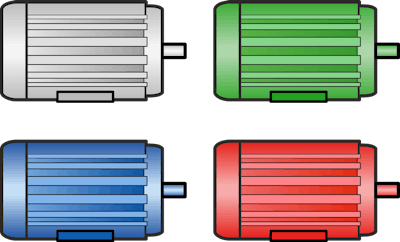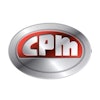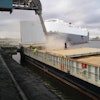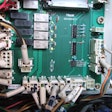
Motorsare the workhorses of any feed manufacturing or grain handling operation.
Choosing a motor alongside new equipment or as a replacement, the number of options can quickly become overwhelming and choosing incorrectly can be expensive, both with the cost of the motor and in downtime while waiting for a replacement.
Choosing the right electric motor type
Feed manufacturing and grain handling facilities use electric motors to operated dozens of different pieces of equipment.
Each operation has a different requirement for horsepower, voltage, RPM and torque to run properly. While you may be to meet these prerequisites with many different motor types, each motor type has advantages and disadvantages that go beyond its operating stats.
- AC Motors:Motors that use alternating current to run are the most common and versatile motor type. AC motors come in a variety of different styles and levels of input, deliver high torque, and are highly durable.
- DC Motors:Motors powered by direct current are great for applications that require speed adjustment, constant torque or reversing capabilities. They also tend to be simpler to install and maintain along with being more efficient.
- Gearmotors: Gearing and a motor built into a single package, gearmotors make it so only one piece of equipment needs to be mounted, operated and maintained.
- Brake Motors:Built with a fail-safe, stop-and-hold spring-set brake that will hold a load in place if there is a power failure. Great for operations where product is being lifted.
Regal Rexnord Corp.’s article “Electric motor overview” goes into detail on the difference between each type of motor.
Choosing between NEMA or IEC motor
When shopping for motors, there are commonly two different sets of standards to choose from,国家电气制造商协会(NEMA) and theInternational Electrotechnical Commission(IEC).
NEMAsets the standards for motors used in North America and IEC sets them for the rest of the world. NEMA motor standards prioritize a broader range of applications, meaning the selection process requires less information about the type of motor the application requires in order to choose a motor that will work. NEMA motors have up to a 25% service factor, the level a motor can temporarily run above its Design Power without being damaged or overheating.
IFCstandard motors are more specialized, built for specific applications and to perform that application well. Motors built to this standard, will be smaller than their NEMA counterparts, and are often cheaper. IEC also has an additional efficiency class, IE5, that NEMA doesn’t have a comparable standard for yet. Using IEC motors will make sure that the conveying system is using the exact amount of power it needs making it the more efficient overall saving money.
Motor environmental factors
Motors in feed mills and grain elevators may need special environmental protections based on where they are located with in the facility.
A motor that runs a drag conveyor outside will need different protections then one inside a mill running a screw conveyor between milling operations. A motors level of protection comes from its enclosure.
Three environmental factors should be considered when determining the enclosure type needed:
- Temperature: Motors that operate in extreme temperatures will need to have venting or be fan cooled. Overheated motors run less efficiently and fail more quickly.
- Liquid, dirt and dust exposure: Motors that are outside, in an area that gets washed down, or are at risk of having liquid spilled or dripped on them need specific enclosures to protect them. NEMA and IEC have rating systems for how resistant an enclosure is to liquid and dust.
- Dust explosion risk: If a motor will be operating in an environment where dust explosions are a possibility should use an explosion proof enclosure designed for grain dust explosions. Explosion proof motors should meet Underwriters Laboratories or CSA standards and have the type of explosive location its usable in on the label.

.jpg?auto=format%2Ccompress&crop=faces&fit=crop&h=48&q=70&w=48)














